David Sanders
 There is a dream of baseball that most Americans know. A small-town boy from a working-class family making it to the major leagues and pitching. Few realize their dream. David Sanders did. He progressed from being an all-state player for his high school in rural Kansas to contending for pitching records at the collegiate level to making appearances at the highest levels of professional baseball with the Chicago White Sox in 2003 and then pitching in two games for the World Series championship team in 2005. Though his time at the professional level was cut short by injury, he lived out a childhood dream shared by millions of Americans.
There is a dream of baseball that most Americans know. A small-town boy from a working-class family making it to the major leagues and pitching. Few realize their dream. David Sanders did. He progressed from being an all-state player for his high school in rural Kansas to contending for pitching records at the collegiate level to making appearances at the highest levels of professional baseball with the Chicago White Sox in 2003 and then pitching in two games for the World Series championship team in 2005. Though his time at the professional level was cut short by injury, he lived out a childhood dream shared by millions of Americans.
David Andrew Sanders was born in Oklahoma City, Oklahoma, on August 29, 1979, to Don and Debbie Sanders. His father, who owned a home remodeling company, introduced David to a variety of sports, including baseball and football. David’s mother was an elementary-school principal. When he was 9, his family moved two hours away to the quiet town of Derby in Kansas. He attended Derby Middle School and kept pursuing his childhood sports, mainly baseball and a year of wrestling.1 “My parents had discouraged football at a young age, but said I could play if I wanted to when I got to high school,” he told the author. “I had looked forward to playing it, but decided I would be better off focusing on baseball.”2 “My dad is a baseball guy and he recognized how much of a blessing it was to be left-handed. When I got to high school, he told me, ‘If you’re still excited about football, by all means, go for it.’ I had started doing so well on baseball that I continued that focus.”3
Sanders played baseball throughout high school and kept honing his craft. He excelled academically and in baseball, being placed on his school’s honor roll for all four years, while also being named an All-League Player in his sophomore year and an All-State Utility Player in his senior year.4 His backyard fence became riddled with circular indents from his constant practice and training.5 Sanders’ pitching prowess caught the attention of numerous Division I scouts. Not wanting to miss varsity play in his freshman year, he decided instead to commit to a junior college, Barton Community College in Great Bend, Kansas. He graduated from high school in 1997 and set off to Barton, two hours away from Derby.6
At Barton Community College, in a sleepy area that captured the idyllic Kansas environment and atmosphere, Sanders excelled in pitching. He posted an ERA of 3.34 with 82 strikeouts in 52⅓ innings in his sophomore year.7 His performance earned him recognition as an all-conference pitcher and secured him the third spot in the school’s single-season strikeout record at the time.8 Sanders began to catch the attention of major-league baseball scouts, particularly that of White Sox scouts Ken Stauffer and John Kazanas.9 In the 1999 amateur draft, Sanders was the White Sox’ sixth-round choice and signed a contract.10
The White Sox envisioned the 6-foot-tall 200-pounder as a strong reliever. He made his rookie-league debut for the White Sox’ team in the Arizona League.11 In seven appearances he posted an ERA of 1.10 with 26 strikeouts in 16⅓ innings.12 For 2000 he was promoted to the Advanced-A Winston-Salem Warthogs (CarolinaLeague).13
At the Advanced-A level, larger crowds, better competition, and more investment by the organization combine to create a semblance of what the majors are like. Manager Brian Dayett was determined to make his players understand the rigors of professional baseball and to turn them into true professional players.14 He told a writer, “We’re trying to instill the work ethic into these kids. We try to tell them, you get past this level to Double A, you’ve made the most important step in pro ball. …”15
Sanders joined the ranks alongside future major leaguers such as future Olympic gold medalist Jon Rauch, future Team USA pitcher Gary Majewski, and others.16 He pitched in a team-high 51 games. He accrued a 3-2 won-lost record and a 5.21 ERA with 50 strikeouts in 48⅓ innings.17 For the 2001 season he was promoted to the Double-A Birmingham Barons (Southern League).
Sanders spent two seasons with the Barons. In 2001 he was 3-0 with a 2.65 ERA in 36 games out of the bullpen.18 In his second year, Sanders posted a 1.84 ERA in 47 appearances. In his last 30⅔ innings, he gave up only three runs, for a 0.88 ERA.19 Thirty-five of his 47 appearances were scoreless and 16 were hitless; he averaged 8.6 strikeouts per nine innings pitched.20 His performance led him to be rated the number-13 prospect in the White Sox organization and he was promoted to the Triple-A Charlotte Knights (International League) and invited to the White Sox’ 2003 spring training.21
After pitching in five games for Charlotte, Sanders was called up by the White Sox.22 The White Sox sent down catcher Josh Paul to make room for Sanders. White Sox manager Jerry Manuel said, “For the most part, we know we’ll need a pitcher before we need a catcher. [Sanders is] a guy that has pitches that can get a righty out and can get a left-handed hitter out. There was no doubt he was the guy.”23
On April 23, 2003, Sanders made his major-league debut against the Baltimore Orioles at Camden Yards, relieving Tom Gordon in the bottom of the eighth with the White Sox trailing 7-1.24 He recorded his first big-league out by forcing Jay Gibbons of the Orioles to pop up to the first baseman, then he recorded his first strikeout by freezing José León, and finally striking out Geronimo Gil swinging to end the inning and his first outing.25
Speaking of his debut, Sanders said, “That first appearance is unlike any other. It just becomes baseball again with the rest of them, but the first one for a reliever is such a strange feeling. … I got to the mound, started taking it all in and I had ‘that moment’ where you realize why you sacrificed so much to be there in that moment.”26
Outside of the game, in his time in the majors, Sanders attended media events and participated with the rest of the team, one notable event being when the White Sox visited the University of Chicago Children’s Hospital during its opening year.27
Perhaps his best moment of the season came in Cleveland on July 13. The Indians had just scored three runs off Jon Garland in the fifth and tied the game, 4-4, with runners on second and third and two outs. Sanders walked Ben Broussard, loading the bases, then struck out Travis Hafner. Two weeks later, on July 25, he was optioned to Charlotte, having made a total of 20 appearances for Chicago. He worked 22 innings in relief, facing 102 batters, opponents batting .281 against him. His ERA was 6.14.28
With Charlotte, he worked 19 games in relief, closing 10, with a 3.68 ERA.
Sanders spent all of 2004 with Charlotte, with 40 appearances, 18 as the closer, and averaging 7.8 strikeouts per nine innings pitched.29 He finished 2-2 with a 6.06 ERA. His 2005 season saw markedly better results, Sanders appearing in 56 games (closing 18) and having a 3.08 ERA and a record of 4-2. When major-league rosters expanded, he was a September 1 call-up.30
Sanders returned to the White Sox against the Detroit Tigers on September 2 at US Cellular Field.31 He relieved starter Freddy Garcia, who departed after seven innings with a 9-1 lead. Pitching the top of the eighth, Sanders faced four batters, allowing a double to Curtis Granderson before finishing the inning. Bobby Jenks worked the ninth.
Sanders made his final professional baseball appearance against the Los Angeles Angels on September 10 in Chicago. Starter Jon Garland had been hit hard and departed after six innings with the White Sox losing, 7-2. Sanders was hit hard, as well. giving up a first-pitch home run to Chone Figgins and a total of three runs on a walk, two hits, and a sacrifice fly. Jeff Bajenaru worked the eighth and ninth of the 10-5 loss. This was Sanders’ last professional baseball game. Following a shoulder injury, Sanders retired shortly after with a career ERA of 6.75 in his 22 major-league games.32
Returning to Kansas, Sanders integrated himself into a nonbaseball life. He worked for different companies in Kansas and in 2025 was the director of strategic partnerships for Towerstone Inc., an insurance broker. He kept baseball in his life as well, being inducted into the Derby Hall of Fame for his baseball career, becoming a coach for a local summer baseball team, and opening a baseball school, D3 Training.33 He and his wife, Kilee, have three children. Seeking to instill the same passion for sports that his father did for him, he takes his children to Kansas City Royals and Chiefs games.
Last revised: March 1, 2025
Notes
1 Adam Suderman, “Sanders Set to Join the Derby Hall of Fame,” Derby (Kansas) Informer, August 4, 2020. https://www.derbyinformer.com/sports/sanders-set-to-join-the-derby-hall-of-fame/article_9bb2bb9e-d67b-11ea-87c2-3300aa3323ab.html.
2 Email from Dave Sanders on January 16, 2025.
3 Suderman.
4 “David Sanders,” MLB.com, https://www.mlb.com/player/david-sanders-425553, accessed October 3,2024.
5 Suderman.
6 Suderman.
7 Suderman.
8 Individual single-season records provided by the Barton Community College Athletics Department, https://d2o2figo6ddd0g.cloudfront.net/o/x/oe3umkkaj0c1jo/IndividualSingleSeasonRecords.pdf.
9 “David Sanders,” MLB.com.
10 “David Sanders,” MLB.com.
11 “David Sanders,” Milb.com, https://www.milb.com/player/david-sanders-425553?stats=career-r-pitching-minors&year=2024. Accessed October 2, 2024.
12 “David Sanders,” Milb.com.
13 “2000 Winston-Salem Warthogs Statistics,” StatsCrew.com, https://www.statscrew.com/minorbaseball/stats/t-ww15442/y-2000. Accessed October 7, 2024.
14 Pete Zanardi, “Dayett Back Managing in White Sox System,” Connecticut Insider, July 11, 2000. https://www.ctinsider.com/news/article/Dayett-back-managing-in-White-Sox-system-16953524.php.
15 Zanardi.
16 “2000 Winston-Salem Warthogs Statistics.”
17 “2000 Winston-Salem Warthogs Statistics.”
18 “David Sanders,” StatsCrew.com. https://www.statscrew.com/minorbaseball/stats/p-16c5c6fe. Accessed October 8, 2024.
19 “Sanders Called Up to White Sox; Pitches Against Baltimore,” Barton Sports, April 24, 2003, https://www.bartonsports.com/sports/bsb/2002-03/releases/20140710z9gkbo.
20 “Sanders Called Up to White Sox; Pitches Against Baltimore,”
21 Suderman.
22 Suderman.
23 “Sanders Called Up to White Sox; Pitches Against Baltimore.”
24 “Sanders Called Up to White Sox; Pitches Against Baltimore.”
25 “Sanders Called Up to White Sox; Pitches Against Baltimore.”
26 “Sanders Set to Join the Derby Hall of Fame.”
27 “David Sanders,” MLB.com.
28 “David Sanders,” MLB.com.
29 “David Sanders,” MLB.com.
30 “David Sanders,” MLB.com.
31 “Detroit Tigers vs. Chicago White Sox – September 2, 2005,” Baseball-Almanac.com, https://www.baseball-almanac.com/box-scores/boxscore.php?boxid=200509020CHA, accessed October 12, 2024.
32 He had surgery to successfully repair the injury, but not enough to play again at the professional level. Sanders email January 16, 2025.
33 Suderman. Kelly Breckunitch, “Training Businesses Partner to Expand Local Opportunities,” Derby Informer, January 20, 2023, https://www.derbyinformer.com/news/business/training-businesses-partner-to-expand-local-opportunities/article_21041b40-990b-11ed-bdc4-c3aafbfad706.html.
Full Name
David Andrew Sanders
Born
August 29, 1979 at Oklahoma City, OK (USA)
If you can help us improve this player’s biography, contact us.

